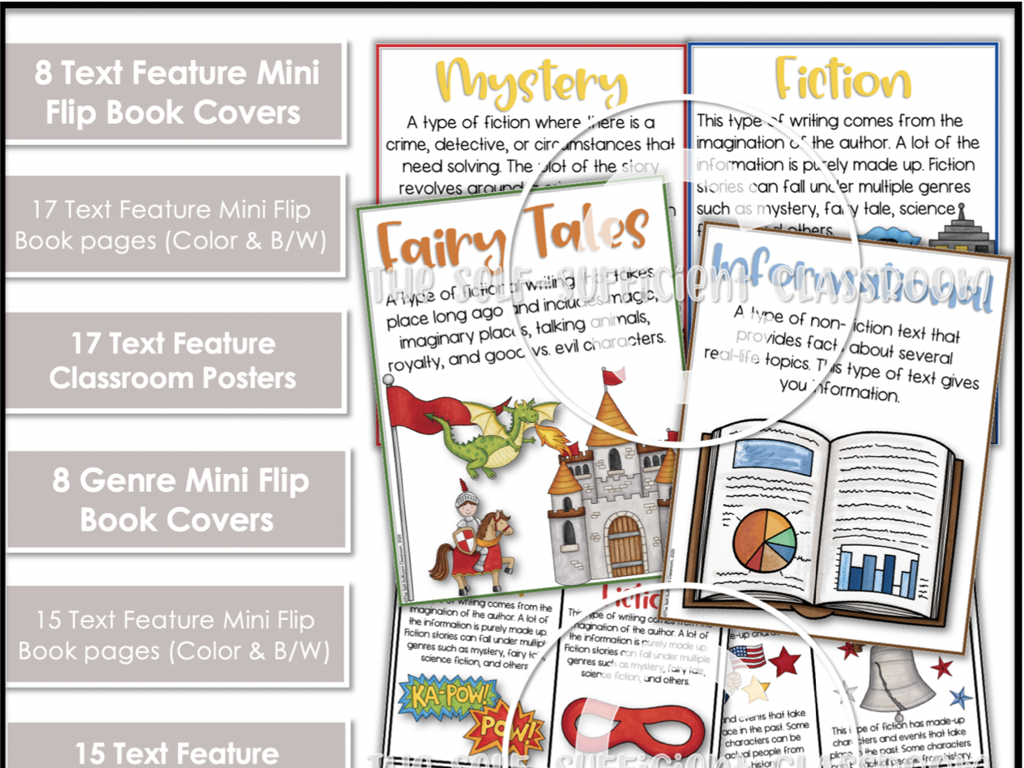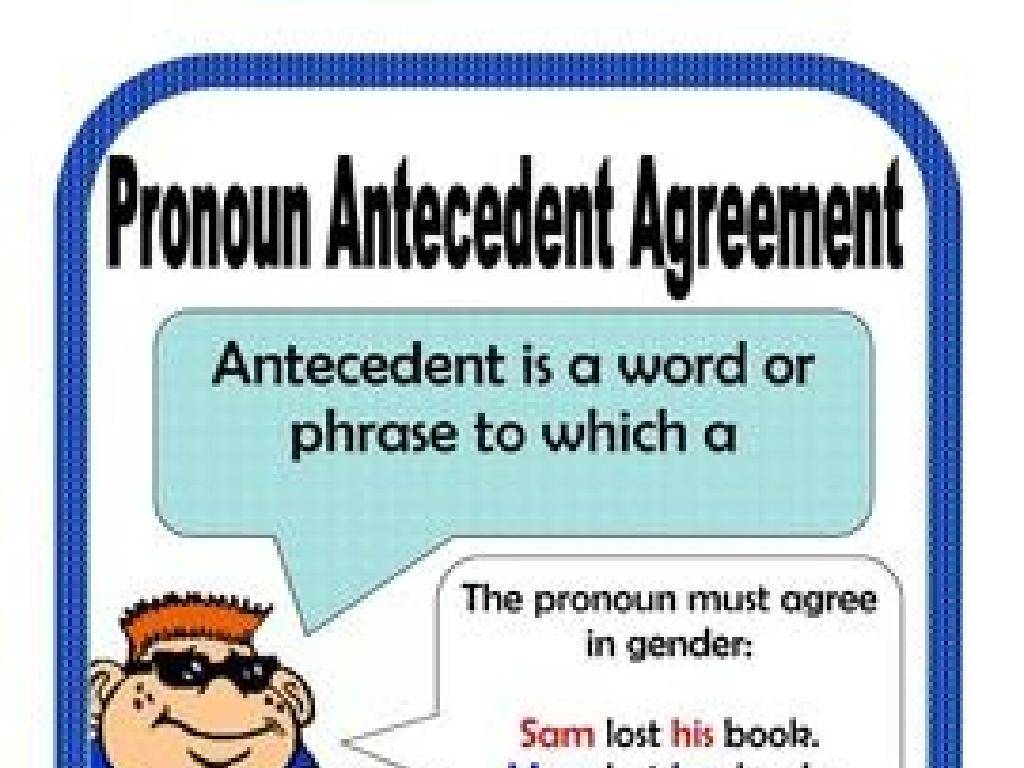Fill In The Missing Correlative Conjunction
Subject: Language arts
Grade: Sixth grade
Topic: Conjunctions
Please LOG IN to download the presentation. Access is available to registered users only.
View More Content
Exploring Correlative Conjunctions
– Role of conjunctions in sentences
– Today’s focus: Correlative Conjunctions
– Define Correlative Conjunctions
– Pairs of words that work together to connect words or phrases
– Examples of Correlative Conjunctions
– ‘Either/or’, ‘neither/nor’, ‘not only/but also’
|
This slide introduces the concept of correlative conjunctions, which are pairs of conjunctions used in tandem to join various sentence elements that are grammatically equal. Start by explaining the general role of conjunctions in linking thoughts, words, and phrases. Then, narrow down to correlative conjunctions, defining them and providing common examples. Emphasize that these conjunctions always appear in pairs and are used to add emphasis, contrast, or choice to a sentence. Encourage students to think of sentences they might use in their daily conversations that include correlative conjunctions. Prepare to give additional examples to ensure students grasp the concept.
Exploring Correlative Conjunctions
– Definition of correlative conjunctions
– Pairs of words that work in tandem
– Connecting equal grammatical items
– They link phrases or words of equal importance
– Examples: either/or, neither/nor
– ‘Either/or’ for choices, ‘neither/nor’ for negations
– Usage: both/and, not only/but also
– ‘Both/and’ combines, ‘not only/but also’ adds emphasis
|
This slide introduces correlative conjunctions, emphasizing their function to connect equal grammatical elements in a sentence. It’s crucial for students to understand that these conjunctions always come in pairs and are used to link similar words, phrases, or clauses. Provide clear examples for each pair, such as ‘either/or’ to indicate a choice between two options, and ‘neither/nor’ to negate both options. Highlight how ‘both/and’ is used to combine two items, and ‘not only/but also’ to add emphasis to the connected elements. Encourage students to create sentences using these conjunctions to solidify their understanding.
Identifying Correlative Conjunctions
– Spotting correlative conjunctions
– Look for pairs like ‘either/or’ and ‘neither/nor’
– Pairs of words that connect
– Words like ‘both/and’, ‘not only/but also’ link ideas
– Practice with example sentences
– Identify conjunctions in provided sentences
– Connect similar ideas or elements
|
This slide is aimed at helping students recognize correlative conjunctions, which always come in pairs and are used to connect comparable grammatical elements within a sentence. Examples include ‘both/and’, ‘either/or’, ‘neither/nor’, ‘not only/but also’, and ‘whether/or’. The practice activity involves identifying these conjunctions within example sentences to reinforce their understanding. Encourage students to explain why the chosen pairs are correlative conjunctions and how they serve to balance the sentence structure. This will enhance their ability to use these conjunctions in their own writing.
Using Correlative Conjunctions Correctly
– Rules for correlative conjunctions
– Connect grammatically equal elements
– Elements like nouns with nouns, verbs with verbs
– Example: Balancing sentences
– ‘Not only did she finish her homework, but she also cleaned her room’
– Practice: Create your own examples
– Use correlative pairs like ‘either/or’ and ‘neither/nor’ in sentences
|
This slide introduces the rules for using correlative conjunctions, which are pairs of conjunctions that work together to connect clauses in a sentence. It’s crucial for students to understand that these conjunctions must link grammatically equivalent elements, such as a noun with another noun or a verb with another verb. The provided example illustrates how to balance a sentence using correlative conjunctions. Encourage students to practice by creating sentences using different correlative conjunction pairs. This will help them grasp how to use these conjunctions to make their writing more coherent and effective.
Correlative Conjunctions: Fill in the Blanks
– Activity: Choose correct conjunctions
– Pick the pair that best completes the sentences
– Example: ___ did he call me, ___ he sent a message
– Possible answers: ‘not only/but also’, ‘either/or’, ‘neither/nor’
– Discuss the reasons for your choices
– Explain why the conjunctions fit in context
|
This slide introduces an interactive class activity focused on correlative conjunctions. Students will practice identifying the correct correlative conjunctions to complete sentences. Provide examples on the board and encourage students to think about the relationship between the sentence clauses. After choosing, they should discuss why their chosen conjunctions are correct, promoting critical thinking about sentence structure. For the given example, the correct conjunctions are ‘not only/but also’, which shows that two actions happened. Other activities could include matching exercises, sentence creation, or a worksheet with various conjunction pairs to choose from.
Common Mistakes with Correlative Conjunctions
– Avoid errors with conjunctions
– Don’t mix up pairs like ‘neither/nor’ and ‘either/or’.
– Ensure parallel sentence structure
– Match the sentence parts: ‘not only/but also’ needs similar forms.
– Correct sentences with mistakes
– ‘She likes neither cats nor dogs.’ is correct, not ‘She neither likes cats or dogs.’
– Practice with examples
|
This slide addresses common errors students make when using correlative conjunctions. Emphasize the importance of using the correct pairs together and maintaining the same grammatical structure, known as parallel structure, after each conjunction. Provide examples of incorrect sentences and guide students to correct them, reinforcing the rules. Encourage students to create their own sentences using correlative conjunctions correctly. As an activity, students can work in pairs to identify errors in a worksheet and correct them, or they can write sentences that demonstrate the proper use of these conjunctions.
Class Activity: Conjunction Challenge
– Pair up and create sentences
– Use various correlative conjunctions
– Think ‘either/or’, ‘neither/nor’, ‘not only/but also’
– Share with the class
– Vote on the best sentences
– Consider creativity and correct use
|
This activity is designed to engage students in collaborative learning while reinforcing their understanding of correlative conjunctions. Have the students work in pairs to create sentences that include correlative conjunctions such as ‘either/or’, ‘neither/nor’, and ‘not only/but also’. Encourage them to be creative and ensure grammatical correctness. After creating their sentences, each pair will share them with the class. Following the presentations, conduct a class vote to determine the most creative and grammatically accurate sentences. This will not only make the learning process fun but also competitive in a healthy way. Provide examples if needed and assist pairs that might be struggling to come up with sentences. Remember to praise the effort and creativity of all students.
Conclusion & Homework: Correlative Conjunctions
– Recap: Correlative conjunctions
– Review how they pair up to connect words or phrases
– Homework: Write a short story
– Incorporate conjunctions like ‘either/or’, ‘neither/nor’
– Use 5 different correlative conjunctions
– Study for a quiz on conjunctions
– Review all types of conjunctions for the quiz
|
As we wrap up today’s lesson on correlative conjunctions, remind students of the importance of these word pairs in creating relationships between different parts of a sentence. For homework, students should write a creative short story that includes at least five different correlative conjunctions, which will help reinforce their understanding through practical application. Encourage creativity and proper use of conjunctions. Additionally, inform students that there will be a quiz on conjunctions in the next class, so they should review their notes and practice identifying and using all types of conjunctions. Provide examples and resources for further study to ensure they are well-prepared.






